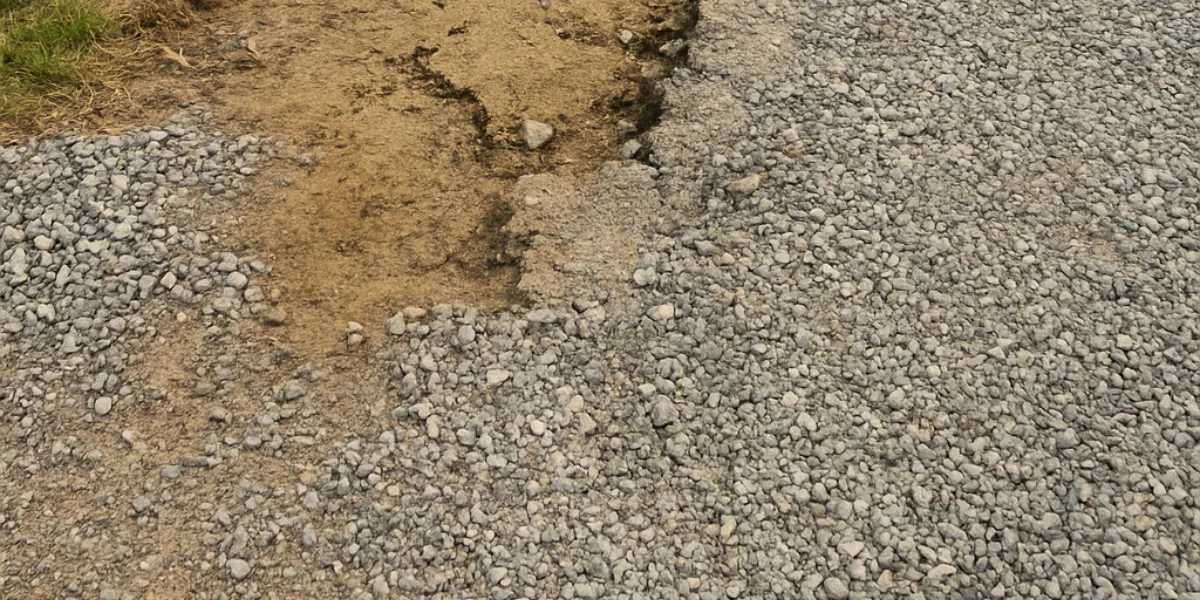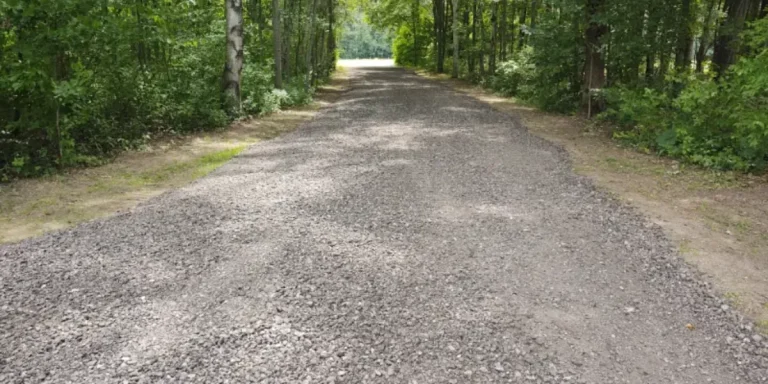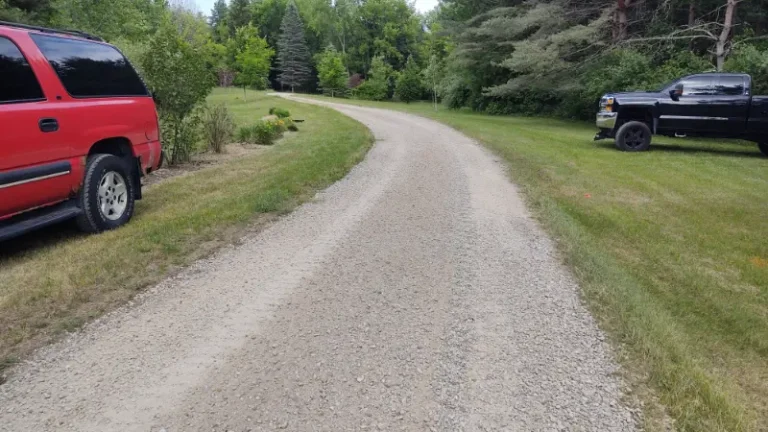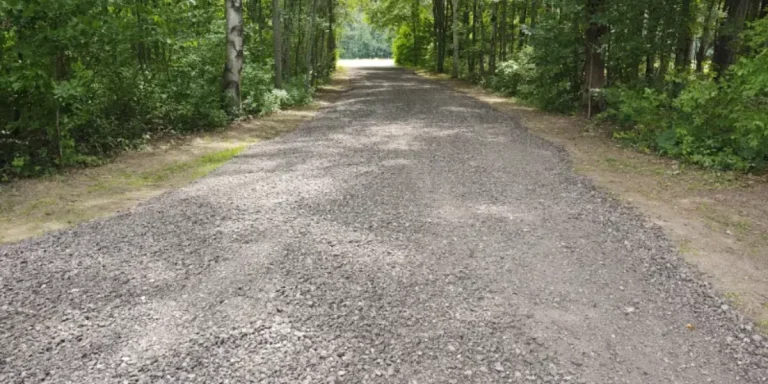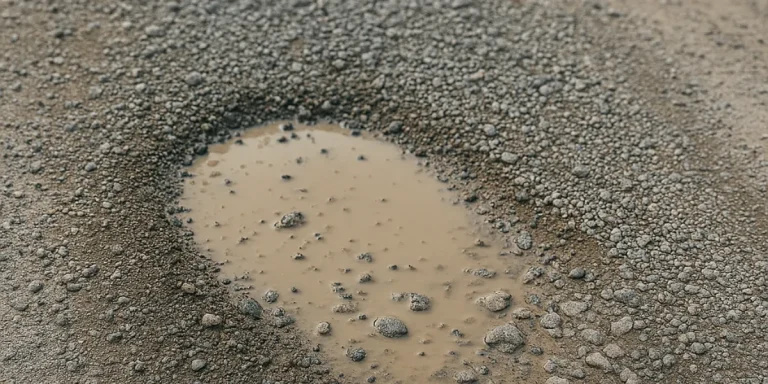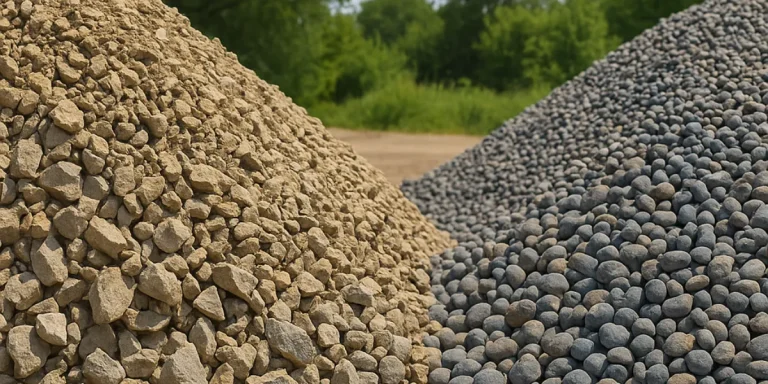How to Tell If You Need a New Driveway Base Layer
A gravel driveway is only as strong as the base beneath it. If you're constantly dealing with potholes, washouts, or uneven surfaces, the issue may not be the gravel itself—it could be the underlying base layer failing to do its job. At Gath’s Landscaping, we specialize in gravel driveway resurfacing and repair throughout Clio, Michigan and surrounding towns. In this post, we’ll walk you through the warning signs that your base layer needs to be replaced, and what we can do to restore your driveway properly.
What is a driveway base layer?
The base layer is the compacted foundation that supports your gravel driveway. It’s usually made from crushed stone or compactable aggregate and is installed several inches thick before the surface gravel is added. A strong base distributes weight evenly, resists shifting, and allows for proper drainage.
If the base layer is thin, uneven, or made from the wrong materials, the driveway will begin to fail—no matter how much gravel you add on top.
Signs your gravel driveway needs a new base layer
Not all gravel driveway problems mean you need a full rebuild—but some issues go deeper than just surface wear. If your driveway is developing ongoing problems that don’t improve with regular maintenance, it could be a sign that the base layer has failed. At that point, adding more gravel won’t solve the problem. A failing base leads to poor drainage, surface instability, and repeated repairs that never seem to last.
Below are the most common signs we see across Clio and surrounding Mid-Michigan communities that indicate it’s time to replace or rebuild the base layer.
1. Recurring potholes and ruts
-
-
- Potholes that come back shortly after being filled
- Wheel ruts that deepen quickly after rain or vehicle use
- Gravel that constantly shifts, displaces, or disappears entirely
-
When potholes and ruts reappear again and again—even after adding new gravel—it usually means the base underneath can’t support the load. Instead of distributing weight evenly, a weak base compresses or erodes, pulling surface gravel down with it.
Gath’s Landscaping often sees this issue in driveways that were DIY-installed or built without proper compaction. Our long-term gravel driveway resurfacing solutions include rebuilding the base where necessary, so potholes stop returning.
If your driveway regularly supports heavy vehicles, trailers, or equipment, we may also recommend grading services to improve weight distribution and runoff control.
2. Drainage issues and standing water
-
-
- Water pooling in the same areas after every rainfall
- Soft, muddy spots that remain wet long after the rest of the driveway dries
- Water running down the center of the driveway rather than off to the sides
-
Drainage problems are one of the clearest indicators of a failed or improperly installed base. A well-graded gravel driveway should shed water efficiently, not trap it.
When water sits on or under your driveway, it slowly weakens the base layer, leading to erosion, frost heave, and eventually potholes or sinkholes.
At Gath’s Landscaping, we solve these issues not only by rebuilding the base but also by implementing drainage corrections, such as regrading, swales, or proper runoff channels. In many cases, this ties into broader landscape grading services for the surrounding property.
3. Uneven settling or sinking
-
-
- Low spots that develop even with light use
- Sections that appear sunken, sloped, or uneven
- Areas that feel soft or spongy when walked or driven over
-
Uneven settling often results from a base that was either too shallow, poorly compacted, or built on unstable soil. Over time, sections of the driveway begin to drop—especially in the center or along edges where structural support is weakest.
This type of movement isn’t just an eyesore. It creates trip hazards, damages vehicles, and usually leads to more extensive repairs later. These issues are common in older properties or those that had a gravel driveway installed over topsoil or unprepared ground.
When our team at Gath’s Landscaping evaluates this kind of settling, we’ll check not only the driveway structure but also the surrounding soil and elevation to see if deeper landscape installation or grading work is needed.
4. Visible mixing of gravel and soil
-
-
- Gravel blending with clay or dirt after a rain
- Surface material that seems to “sink” into the ground
- A muddy or sticky driveway, even in dry weather
-
If you see gravel and soil mixing together, it means there’s no proper barrier between the base layer and the subsoil. This usually happens when the original installation skipped key steps like geotextile fabric or failed to use the right base materials (such as crushed stone or compacted gravel fines).
As the gravel pushes downward into the soft soil, it weakens the driveway and increases water retention. The result? A muddy, uneven mess that only gets worse with each season.
When rebuilding driveways, Gath’s Landscaping uses professional-grade base materials and crushed stone delivery to ensure proper compaction, drainage, and long-term durability. If needed, we can also deliver and install topsoil or fill dirt to reshape and support surrounding areas where runoff is contributing to erosion.
If you’re noticing any of these signs, it may be time to stop patching and start thinking about a full solution. Gath’s Landscaping provides expert gravel driveway repair, base rebuilding, material delivery, and landscape grading throughout Clio, Mt. Morris, Birch Run, Frankenmuth, Flushing, Saginaw, and nearby areas in Genesee County. We’ll inspect your driveway, identify the root cause, and recommend a fix that lasts.
Common causes of base layer failure
In our work throughout Genesee County, we’ve found that many gravel driveway issues can be traced back to one underlying problem: a compromised base layer. The base layer is the foundation of your gravel driveway—if it fails, everything above it will too.
Here are the most common reasons we see for base layer failure in Clio, Mt. Morris, Birch Run, and surrounding areas:
Improper installation
One of the most frequent causes of failure is a base that wasn’t built properly from the beginning. A quality gravel driveway base should be constructed in multiple layers, with each layer compacted thoroughly using heavy machinery. When that process is skipped or rushed, it leaves the base soft, uneven, and prone to sinking.
-
- Not excavating deep enough to remove soft soil or organic material
- Skipping geotextile fabric in areas with clay or poor drainage
- Failing to compact each layer of crushed stone before adding the next
Gath’s Landscaping routinely rebuilds gravel driveways that were originally installed without proper depth or compaction. As part of our gravel driveway resurfacing and rebuilding services, we ensure that the base is engineered to handle real-world traffic, weather, and water flow.
Poor materials
A driveway is only as strong as the materials it’s built with. Many failing driveways were constructed using low-quality or inappropriate base materials—such as sand, loose fill dirt, or unwashed gravel. These materials don’t interlock or compact properly and are easily eroded by water.
-
- Base layers made with topsoil, loam, or screened fill instead of crushed stone
- Over-reliance on decorative gravel or river rock, which doesn’t provide structural support
- No separation between base materials and native soil
When rebuilding, we use high-quality, compactable crushed limestone or crushed concrete as base material and offer gravel delivery that meets the specific needs of each project.
Drainage problems
Water is the #1 enemy of gravel driveways. When the base layer holds water or allows it to pool, the material softens, shifts, and erodes over time. This leads to potholes, heaving, and rutting.
-
- Driveways with no crown or slope to direct water away
- No ditches, swales, or perimeter grading to handle runoff
- Soil underneath that retains water, especially in flat or wooded areas
Gath’s Landscaping often solves these issues with full grading services, recontouring the surface to promote water movement. In some cases, we may also recommend adjacent drainage solutions or even landscape regrading to prevent future base failure.
Tree roots or organic debris
Organic material under the base layer—like tree roots, buried stumps, or topsoil—can rot over time and create air pockets. These voids collapse under the weight of vehicles, causing sinking and surface cracking.
-
- Driveways placed near old tree lines or former wooded lots
- No removal of roots or debris before installation
- Settling caused by decomposition of hidden organic matter
Our team ensures all unsuitable materials are removed before any driveway installation begins, and we use compacted stone in layers to prevent void formation.
Frequent heavy traffic
Even a properly built base layer can wear down prematurely if it isn’t designed to handle the weight and pressure placed on it. We see this often with gravel driveways used by:
-
- Commercial delivery trucks or trailers
- RVs, boats, or utility trailers stored on-site
- Farm equipment or lifted trucks with oversized tires
These vehicles place significantly more strain on the base layer. If the gravel isn’t deep enough or lacks reinforcement, ruts and soft spots quickly form. In high-traffic areas, Gath’s Landscaping recommends deeper base layers and compacted crushed stone that interlocks tightly to support weight.
Understanding what causes base failure is the first step toward fixing the real issue—not just the symptoms. Whether you need gravel driveway repairs, drainage upgrades, or a complete base rebuild, Gath’s Landscaping has the experience and equipment to deliver lasting results.
We proudly serve Clio, Mt. Morris, Birch Run, Frankenmuth, Flushing, Saginaw, and surrounding communities throughout Genesee County.
How Gath’s Landscaping fixes base layer issues
When you call Gath’s Landscaping to evaluate your gravel driveway, we take a thorough approach to diagnosis and repair. If the base is the problem, we don’t just patch the surface—we rebuild it from the ground up.
Our process includes:
-
- Excavating the problem areas to remove soft or failed materials
- Installing a new base layer using compacted crushed stone for strength and drainage
- Regrading the driveway to ensure proper runoff and water control
- Spreading and compacting fresh gravel, matched to your property’s needs
We also offer material delivery, so you get the right type and volume of gravel or stone without the hassle of hauling it yourself.
This full-service approach ensures your new driveway base lasts for years—and prevents recurring problems that cost more to fix over time.
Proudly serving Mid-Michigan
Gath’s Landscaping provides expert gravel driveway repairs and material delivery services in:
-
- Clio
- Mt. Morris
- Birch Run
- Frankenmuth
- Flushing
- Saginaw
- And surrounding areas in Genesee County
Whether your driveway needs a full rebuild or just proper resurfacing, our team is ready to help.
Get your driveway back on solid ground
Schedule your driveway evaluation today
If you’re tired of filling the same potholes over and over, it’s time to take a closer look beneath the surface. Gath’s Landscaping can assess your gravel driveway, determine if the base layer is failing, and provide a lasting solution that fits your budget.
Call us today or request a free estimate to get started. We proudly serve Clio and surrounding Mid-Michigan communities with expert gravel driveway repair, material delivery, grading, and more.

